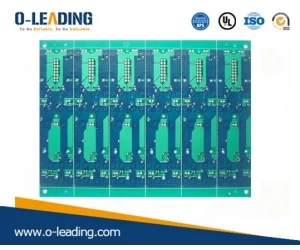Why is the edge of PCB burning when it is electroplated?

As electronic products require sophisticated technology and certain environmental and safety adaptability, PCB plating technology has been greatly improved. In PCB plating, the chemical analysis of organics and metal additives is more complex and the chemical reaction process is more accurate.
But even so, PCB plate plating will still occasionally occur side burning problems, so the root cause of the problem?
The reasons for burning the edge of PCB plate during plating are as follows:
(1) The current density is too high
Each bath has its optimum current density range.
The current density is too low, the coating grains are coarsened, and even the plating layer cannot be deposited. When the current density is increased, the cathodic polarization is increased, so that the plating layer is dense and the plating rate is increased. However, if the current density is too large, the coating will be burnt black or burnt;
(2) Insufficient additives
In simple salt plating, if the additive is added too much, the additive additive film layer is too thick, and the main salt metal ion is difficult to penetrate the adsorption layer discharge, but H+ is a small volume of protons, and it is easy to penetrate the adsorption layer to discharge hydrogen, and the plating layer is easy. Burnt. In addition, too many additives have other side effects, so any additives and brighteners must adhere to the principle of less added.

LED Lighting manufacturer china
(3) Tin-lead anode is too long
When the anode is too long and the workpiece is too short, the power line at the lower end of the workpiece is too dense and easy to burn; when the distribution of the anode in the horizontal direction is much longer than the length of the workpiece placed laterally, the power lines at both ends of the workpiece are dense and easy to burn.
(4) Insufficient bath circulation or agitation
Stirring is the main means to increase the convective mass transfer rate. By using the cathode to move or rotate, the relative flow between the liquid layer on the surface of the workpiece and the plating solution at a slightly distant position occurs; the greater the stirring intensity, the better the convective mass transfer effect. When the agitation is insufficient, the surface liquid flows unevenly, causing the coating to burn. (High Frequency PCB wholesales china)
(5) Insufficient tin-lead metal content
The metal content is insufficient, the current is slightly larger, H+ is easily discharged by the machine, and the diffusion of the plating body and the electromigration speed become lower, thereby causing scorching.
































